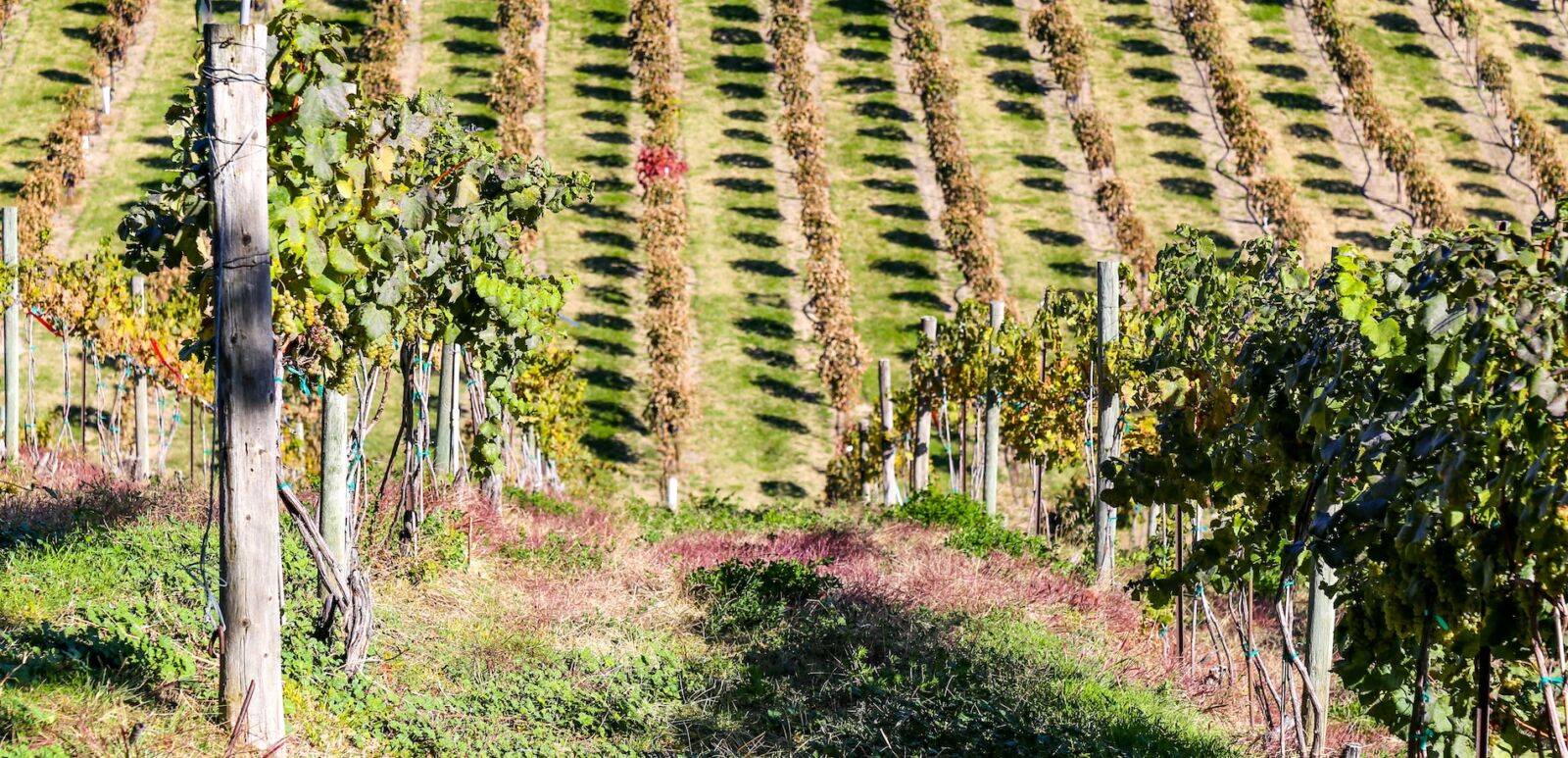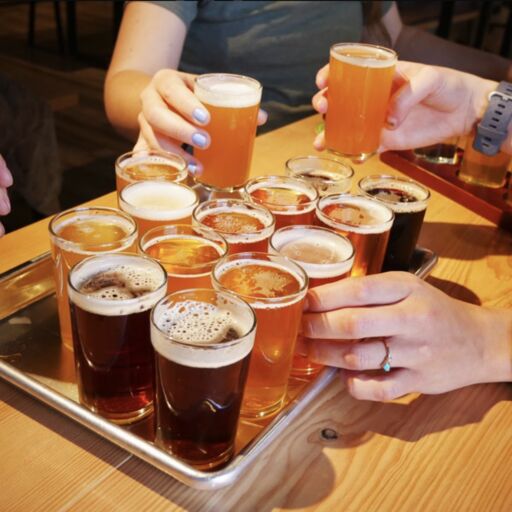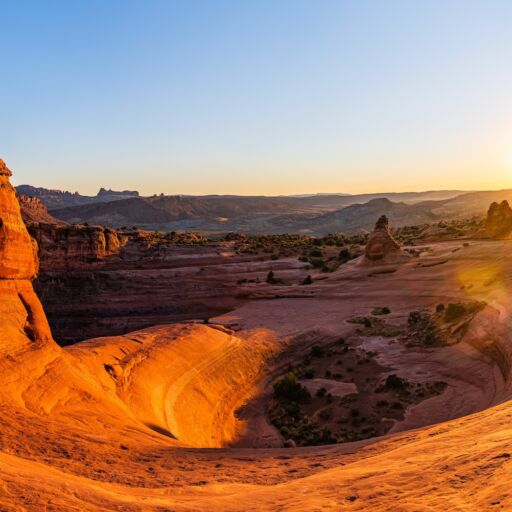In the last decade, Idaho has gone from 43 wineries to 73. That may seem like small potatoes (puns!) compared to the more than 120 wineries in the Walla Walla region in nearby Washington or the more than 600 in Napa Valley, but it’s a sign of things to come. If this trend continues, you may one day get a text that reads “Want to get wine drunk in Idaho?” and, without blinking an eye, respond, “Hell yes.” That is to say, Idaho is on its way to becoming a wine state.
Idaho is beautiful and a prime location for vineyards. While we might all get a little lost in the image of a potato, the state is part of the mountain west. It’s rivers and snow capped peaks, valleys and desert. It’s the kind of place with views that look like fresh air tastes. There’s hiking, skiing, biking, whitewater rafting, fly fishing, and staring out the window while feeling wistful. There are also loamy volcanic soils excellent for growing wine grapes.

Idaho’s Snake River Valley is the site of a long gone volcano that left behind ash mixed in with the soil. That means it drains quickly. There are loads of minerals. The wines are salty and savory.
While they don’t use exclusively volcanic grapes, Split Rail Winery in Boise might be one of the best examples of how the Idaho wine scene is expanding. The winery produces a range of innovative sparkling and flat wines using natural wine methods. They make reds and whites and an award winning riesling. They’re also making orange wine, which, for the uninitiated, is starting a well-deserved coup on restaurant wine lists and is something new they’re bringing to Idaho.
As the wine industry has grown, it’s also offered a different kind of experience than you might get in the more famous American wine regions, which can be more impersonal, operating like wine pouring machines.
On Aiyana Moore’s Idaho Wine Tours, which cover the Sunnyslope region, the Eagle Foothills, and Boise, visitors will often get the chance to talk and connect with the family who owns the vineyards, harvests the grapes and bottles the wine. “Which is something that you will not experience in pretty much any other wine industry in the country,” Moore said.
Something else Idaho can provide to wine tourists: outdoor adventure. “I mean, the hills are right here. We’ve got big mountains, just right over the range. So everybody skis and bikes,” Split Rail Winery Owner Jed Glavin said.
And so here it is, the rundown on THE vineyards to visit in Idaho as well as some of the best pairings of wineries and outdoor adventure.
The Sunnyslope Region
The Sunnyslope Region, in the southwest of Idaho, has the largest concentration of wineries and vineyards in the state. It’s about 45 minutes outside of Boise and, out of anywhere in Idaho, it might feel the most like Napa Valley. There are rolling hills and mountains in the distance. Rows and rows of grapes. Right outside of Caldwell 16 wineries cluster so close together your dad might call it “spitting distance” – apt in this situation. So yes, absolutely book a wine tour and get driven around for the day (you will be drinking, after all). But you could easily bike the area as well.
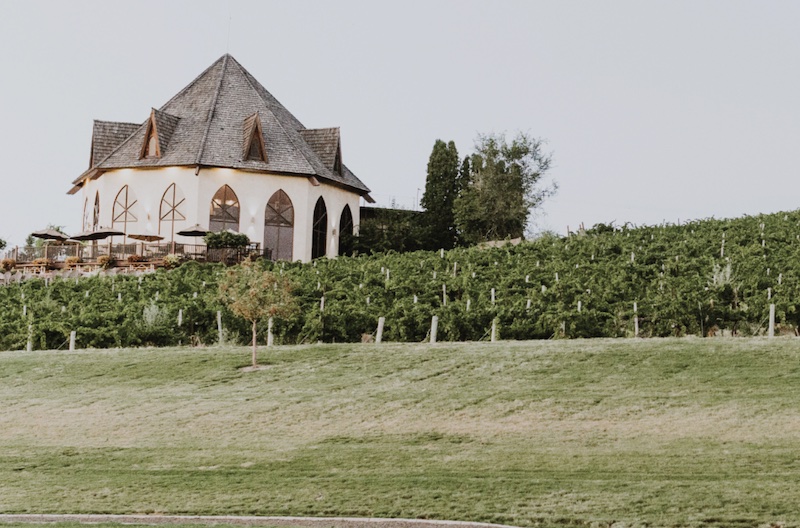
As far as the wine goes, most famous is probably Ste. Chapelle Winery, which opened in 1975 and helped restart the Idaho wine industry. It’s connected to Sawtooth Winery down the road, and they’re known for doing some of the wines Idaho does best: rieslings, syrahs and tempranillos. A little farther away at Indian Creek Winery you’ll find blends like their Star Garnet – a red blend that changes slightly every year. The nearby Williamson Orchards and Vineyards exemplifies the energy of Idaho: the wine is high quality, but the presentation is accessible. It’s a family owned place; wooden cabinets and homemade quilts hang on the wall of the tasting room.
These wineries pair best with: the rodeo, hiking, picking fruit and holding baby goats
Boise and Garden City
Boise, and maybe more accurately, nearby Garden City is home to a number of urban wineries like Spilt Rail. Cinder Wines is focused on volcanic wines. They source their grapes from the Snake River Valley and produce a mean viognier – a grape used to make dry whites that grows particularly well in Idaho. Because Idaho is surprisingly like France.
Eagle
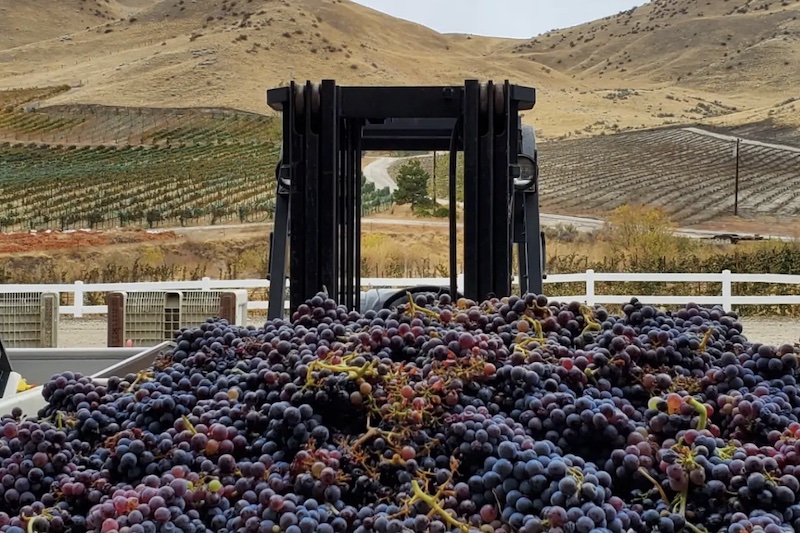
Eagle, Idaho is close to Boise, (like 20 minutes close) but in 2015, the Eagle foothills were established as their own designated growing region. Prepare yourself for science: despite the fact that the area is surrounded by the Snake River Valley, its elevation and the granite pebbles found in the soil make it a different environment for growing. In scientific terms, the grapes have a slightly different vibe. Roots grow deep in areas with lots of granite, and although there are a lot of wine words like “acidic” or “bright” to describe what’s going on with the taste, what you might need to know about Eagle is that while you’re still close to Boise, you’re even closer to the great outdoors. 3 Horse Ranch Vineyards produces a variety of tasty reds and whites up in the foothills. Ranch is the right word – surrounded by hills and as beautiful in the snow as it is in the sunshine.
Pairs best with: hiking, mountain biking skiing, white water rafting, a nice easy bike ride
Lewiston
Lastly, there’s northern Idaho. That strip of land between Washington and Montana that always makes Idaho look like New Hampshire’s big brother. If you’re shocked that it’s possible to grow grapes as far north as the Idaho panhandle, you’re not alone. But the Lewis-Clark Valley around Lewiston is actually the lowest elevation point in Idaho. It’s warmer than you’d think. If you’re really looking to taste the land up here, there are a couple of estate vineyards and wineries, meaning that at least some of the wine they’re producing is grown, fermented, and bottled on site (although there can be different definitions of estate bottling). Colter’s Creek and Rivaura Vineyards outside of Lewiston are both estate vineyards nestled in along the Clearwater River, along with Clearwater Canyon Cellars a little closer to town.
Pairs best with: learning about Nez Perce culture, more white water rafting, fly fishing


